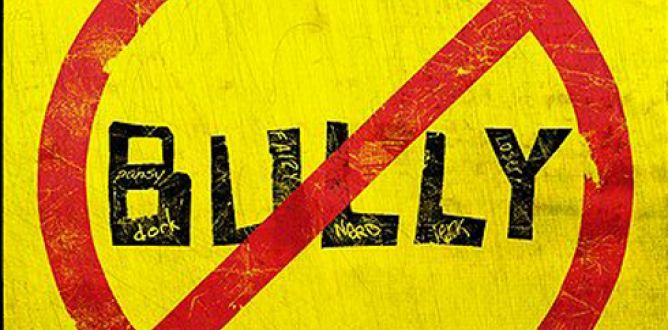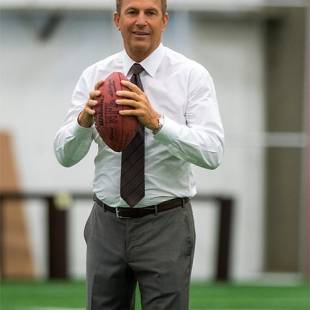Bully Parent Guide
If there ever was a film you should watch with your older children and teens it's this one.
Parent Movie Review
The MPAA originally rated Bully R for language, however the distributor has surrendered this rating and has released the film without a rating.
Bully fits into the culture of your local multiplex the same way the subjects within this film fit into their peer groups—it doesn’t. While bombs are blasting in the action movie on one side of you, and teens are holding the biggest house party ever on the other, this documentary is somehow supposed to lure you in to see its very important message about bullying in America. It’s like serving spinach at a dessert buffet…
The film is admirable in its quest to help audiences understand not only that kids are being bullied, but also to have you feel their frustration, pain and hopelessness. It covers the stories of various young people, mostly in middle and high school, who are victims of verbal, physical and social abuse. As we view an average day in their lives we see the backstage behavior that teachers and parents aren’t privy to—including one vice-principal who appears naive to the point of negligent after a camera crew documents bullying behavior of kids she describes as, “Good as gold.”
Also impressive is the range of victims it presents. Most of these kids are targets of abuse simply due to social and physical perceptions. When an autistic boy’s mother asks why he would include children who bully him as friends, he wonders what friends he would have if he didn’t. A young girl, who identifies herself as gay, struggles with outright assault after a student driving a minivan deliberately hits her. Now she lives in social exclusion. Another boy pleads through tears for help at a town hall meeting that local school officials refused to attend. And the father of a teen who eventually took his own life frames the open and close of the film.
These moments and many more are authentic and powerful. Somehow director Lee Hirsch has managed to bring his camera into school busses, hallways and playgrounds with little evidence of distracting his subjects from their “natural” behavior.
If there ever was a film you should watch with your older children and teens it’s this one. In my experience, those of us who have been subjected to bullying will have no problem feeling the emotion on the screen. Meanwhile those fortunate enough to have bypassed this cruel initiation into adulthood may have a disconnect between what they witness and the director’s intended outcome. No matter which side of the line you or your child are on, taking the time to talk about these issues will make the experience more meaningful. (You may find some helpful discussion pointers in this downloadable guide to the film Bully.)
However, this documentary’s ability to fight this prevalent problem still has some challenges. The first came after the MPAA awarded the movie an R rating due to language used by kids interacting on the street and at school. We hear half a dozen sexual expletives, at least four derogatory homosexual terms and a few other profanities. One male also makes a violent and sexually explicit threat to another boy.
While the great deal of media attention that was drawn when the film’s distributor attempted to appeal the ruling might be seen as, “Any publicity is good publicity,” The Weinstein Company still failed to get a PG-13. So they decided to release the movie in the U.S. as “Unrated.” This choice still has the potential to limit audiences because many theaters typically refuse to show unrated films. (At the time of this writing some theater chains are allowing exceptions to this rule and giving young people, who can demonstrate permission from parents, access to the film.)
The second concern lies with an oversight in the story construction of Bully that is a sad reflection of our society’s desire for tales with clear protagonists and antagonists. The “bullies” in this movie are the bad guys. Yet, unlike the action film playing in the other theater, this isn’t a script about drug lords or zombies. The bullies seen in this documentary are children too and in need of help just as their victims are. What motivates a person to be a bully? What kind of intervention might assist them in correcting this destructive behavior? If you have an opportunity to view this production, be sure to ask those questions too.
Directed by Lee Hirsch. Starring Writers: Lee Hirsch, Cynthia Lowen. Running time: 99 minutes. Theatrical release March 30, 2012. Updated July 17, 2017
Bully
Rating & Content Info
Why is Bully rated Not Rated? Bully is rated Not Rated by the MPAA The MPAA originally rated Bully R for language, however the distributor has surrendered this rating and has released the film without a rating.
Violence: This documentary includes frequent references to suicide. Other scenes include adolescents making violent and profane remarks intended to cause mental anguish. Punching, choking and other physical alterations are depicted.
Sexual Content: A young male makes a violent threat (with references to sodomy) to another boy.
Language: At least six sexual expletives, four derogatory homosexual terms, and a few other mild profanities are used.
Drugs/Alcohol: Beer is seen in a kitchen.
Page last updated July 17, 2017
Bully Parents' Guide
Some young viewers may come away from Bully wondering what they can do to help their own situation (if they feel they are victimized) or how they might be able to help others. These action topics are not discussed in depth within the film, so parents and teachers should be ready to provide this important information. To help you prepare, you can download this guide to the film Bully.
Home Video
The most recent home video release of Bully movie is February 11, 2013. Here are some details…
Home Video Notes: Bully
Release date: 12 February 2013
The documentary Bully releases to home video (Blu-ray/DVD Combo Pack) with the following extras:
- Filmmaker Q&A
- Featurettes
- Celebrity PSAs
- Deleted Scenes
Related home video titles:
Bullying is also depicted in some fictional scripts, such as A Walk to Remember, Bridge to Terabithia, Forrest Gump, How to Eat Fried Worms and Diary of a Wimpy Kid.


